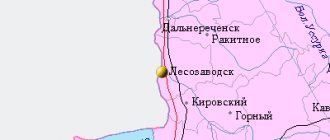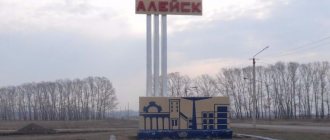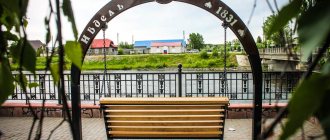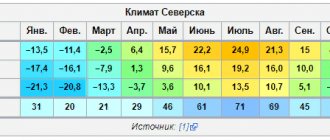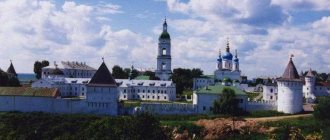For other places with the same name, see Uyar (localty).
City in Krasnoyarsk Krai, Russia
| Uyar Uyar | |
| City [1] | |
| Monument to Vladimir Lenin in Uyar | |
| Flag Coat of arms | |
| Location of Uyar | |
| Uyar Location of Uyar Show map of Russia Uyar Uyar (Krasnoyarsk region) Show map of Krasnoyarsk Territory | |
| Coordinates: 55°49′36″N 94°18′55″E / 55.82667°N W. 94.31528 ° E / 55.82667; 94.31528 Coordinates: 55°49′36″N 94°18′55″E / 55.82667°N W. 94.31528 ° E / 55.82667; 94.31528 | |
| A country | Russia |
| Federal subject | Krasnoyarsk region [1] |
| Administrative region | Uyarsky district [1] |
| District city | Uyar [1] |
| Known since | 1760 [2] |
| City status from | 1944 [2] |
| Height | 340 m (1120 ft) |
| population size (2010 Census) [3] | |
| • General | 12 665 |
| Administrative status | |
| • Capital from | Uyar district [1], district town of Uyar [1] |
| Municipal status | |
| • Municipal district | Uyarsky municipal district [4] |
| • Urban village | Urban settlement Uyar [4] |
| • Capital from | Uyar municipal district [4], urban settlement Uyar [4] |
| Timezone | UTC+7 (MSK+4[5]) |
| Postal code [6] | 663920 |
| OKTMO ID | 04657101001 |
| Web site | admuyar.ru |
Uyare
(Russian: Уяр) is a city and the administrative center of Uyarsky District in Krasnoyarsk Krai, Russia, located on the Uyarka River (Yenisei's basin) 132 km (82 mi) east of Krasnoyarsk. Population: 12,665 (2010 census); [3] 13,807 (2002 census); [7] 17040 (1989 census). [8]
Links[edit]
Notes[edit]
- ^ abcdefgh Law No. 10-4765
- ^ B s d "General information" (in Russian). Retrieved March 21, 2021.
- ^ a b Federal State Statistics Service (2011). “All-Russian Population Census 2010. Volume 1" [All-Russian Population Census 2010, vol. 1]. All-Russian Population Census 2010 [All-Russian Population Census 2010]
. Federal State Statistics Service. - ^ abcde Law No. 13-3040
- "On the Calculation of Time". Official Internet portal of legal information
. June 3, 2011. Retrieved January 19, 2021. - Post office. Information and computing center of OASU RPO. ( Post office
).
Search for postal service objects ( postal Search for objects
) (in Russian) - ↑
Federal State Statistics Service of Russia (May 21, 2004).
“The population of Russia, the constituent entities of the Russian Federation as part of federal districts, urban settlements, settlements, settlements is 3 thousand or more people” [Population of Russia, its federal districts, federal districts, districts Urban settlements, rural settlements - administrative centers and rural settlements with a population of over 3,000] (XLS). All-Russian Population Census 2002
. - “All-Union Population Census of 1989. The current population of the union and autonomous republics, autonomous regions and districts, territories, negative phenomena, urban settlements and villages, 10 facts that you did not know about the Trans-Siberian Railway.” Telegraph
.
The city of Uyar in the Krasnoyarsk Territory
Uyar is a small town in the Krasnoyarsk Territory, located 132 kilometers to the West near the Uyarka River.
From the history of the city of Uyar
The city is relatively young - it was founded around the 18th century. Uyar is interesting because it began with a hut and a postal station, gradually expanding due to the influx of new residents from various places: the Oryol province, the Volga region, Ukraine and even Latvia.
Through the efforts of residents, the city gradually developed. About half a century after its founding, a railway station appeared near Uyar, on the Trans-Siberian Railway, which later became an integral part of it.
Another important event in the development of Uyar is the opening of a brick factory, which occurred in the first quarter of the last century. It was a kind of “impetus” for the rapid development of local industry - with a difference of several years, new factories appeared one after another.
The agricultural sector was also successful - livestock was actively raised in Uyar and grain crops were grown.
The area, moreover, turned out to be rich in mineral deposits. So life flourished there and has not died out to this day.
Our time in the city of Uyar
Nowadays Uyar is a regional center, occupying a significant part of the coast of the Uyarka River. The unity with the railway station has still been preserved. Moreover, the close proximity of transport routes is the most important factor in both the current and future development of Uyar. In addition to the Trans-Siberian oil pipeline passing through the city, an oil loading station began operating here in 2006.
Another developed area in modern Uyar is the food industry, consisting of a number of factories.
Important Parts
These seemingly different residents of Uyar, it seems, found a common language almost immediately, and developed their relationships in parallel with their native land. This fact is confirmed by the monument to the fighters for Soviet power standing in the picturesque city park, erected and then repaired by the residents.
Uyar, standing on a pedestal at the T-34 station, also reminds of the difficult events that did not pass by.
This town doesn't seem all that special, but it still has one very significant building from 1912 - a brick water tower, entirely hand-built by local residents. It once again shows the unity of spirit of a considerable number of people who, in one way or another, took part in the “writing” of the history of Uyar, and, therefore, makes a strong impression on the beholder.
Map
| Uyar: maps |
Uyar: photo from space (Google Maps) Uyar: photo from space (Microsoft Virtual Earth)
| Uyar. Nearest cities. Distances in km. on the map (in brackets along roads) + direction. Using the hyperlink in the distance , you can get the route (information courtesy of the AutoTransInfo website) | |||
| 1 | Zaozerny | 29 (42) | NE |
| 2 | Zelenogorsk | 35 (60) | NE |
| 3 | Partisan | 36 (36) | YU |
| 4 | Shalinskoye | 36 (94) | Z |
| 5 | Borodino | 37 (58) | IN |
| 6 | Podgorny | 64 () | NW |
| 7 | Zheleznogorsk | 68 (128) | NW |
| 8 | Sosnovoborsk | 69 (108) | NW |
| 9 | Aginskoe | 72 (93) | SE |
| 10 | Irbeyskoe | 73 (114) | IN |
| 11 | Zykovo | 74 () | Z |
| 12 | Berezovka | 78 (89) | Z |
| 13 | Krasnoyarsk | 92 (109) | Z |
| 14 | Kansk | 95 (122) | NE |
| 15 | Sukhobuzimskoe | 98 (186) | NW |
| 16 | Yemelyanovo | 109 (135) | Z |
| 17 | Ilansky | 118 (144) | IN |
a brief description of
Located in the foothills of the Eastern Sayan, on the river. Uyarka (Yenisei basin), on the Moscow highway, 132 km east of Krasnoyarsk. Railway station.
Territory (sq. km): 72
Information about the city of Uyar on the Russian Wikipedia site
Historical sketch
Known since 1760, when a postal station and a Yamskaya hut were built. The settlement grew due to immigrants from Latvia, Ukraine, the Volga region, and the Oryol province. In the list of 1859 this is the village of Uyarskaya near the river. Uyar. In 1874, 1060 people lived in Uyar.
The form of the hydronym indicates the primacy of the hydronym, which makes the etymology from the Russian “u yar” unlikely. Perhaps the hydronym is a distortion of the formation from the ancient Turkic stem oy “pit, depression”, in Altai oyor “hollow out, pierce” and the hydronym Oyor (Oyur, Uyur). In Buryat, Mongolian oy “forest”, Yakut oyur, oyuur “forest”.
By the end of the 19th century. A railway station was built in Uyar (on the Trans-Siberian Railway). In 1897, the Uyarskaya station was renamed Olgino, in 1906 - Klyukvennaya (named after the track engineer). Gradually, the station and the village of Uyar merged into one settlement.
Working village of Uyar since 1934. City since 1944. In 1973, Klyukvennaya station was renamed Uyar.
A brick factory was opened in Uyar in 1922, in 1926 - the Klyukvensky refractory plant (based on open deposits of refractory clays), in 1948 - a mica pinching shop, then - the Uyar mica factory, in 1958 a reinforced concrete structures plant was built, in 1975 - asphalt concrete plant.
Economy
JSC - "Uyarochka" (milk, bakery, ceramic factory, forestry, meat processing plant.
Grain and fodder crops are grown in the Uyarsky district. They raise cattle and pigs.
Deposits of kaolin clay, sand, gravel, granite.
Architecture, sights
In the Uyarsky district, in the village of Olgino, there is a wooden church (early 20th century).
| Population by year (thousands of inhabitants) | |||||||
| 1874 | 1.1 | 1996 | 16.6 | 2008 | 12.6 | 2017 | 12.1 |
| 1939 | 15.3 | 1998 | 16.3 | 2010 | 12.4 | 2018 | 12.0 |
| 1959 | 21.6 | 2000 | 15.9 | 2011 | 12.7 | 2019 | 12.0 |
| 1967 | 20 | 2001 | 15.8 | 2012 | 12.5 | 2020 | 11.9 |
| 1970 | 20.6 | 2003 | 13.8 | 2013 | 12.4 | 2021 | 11.9 |
| 1979 | 18.0 | 2005 | 13.3 | 2014 | 12.3 | ||
| 1989 | 17.0 | 2006 | 13.1 | 2015 | 12.3 | ||
| 1992 | 17 | 2007 | 12.9 | 2016 | 12.2 | ||
Population
| Population | ||||||||
| 1874[10] | 1939[11] | 1959[12] | 1967[10] | 1970[13] | 1979[14] | 1989[15] | 1992[10] | 1996[10] |
| 1100 | ↗15 347 | ↗21 646 | ↘20 000 | ↗20 581 | ↘18 028 | ↘17 040 | ↘17 000 | ↘16 600 |
| 1998[10] | 2000[10] | 2001[10] | 2002[16] | 2003[10] | 2005[10] | 2006[10] | 2007[10] | 2008[10] |
| ↘16 300 | ↘15 900 | ↘15 800 | ↘13 807 | ↘13 800 | ↘13 300 | ↘13 100 | ↘12 900 | ↘12 600 |
| 2009[17] | 2010[18] | 2011[10] | 2012[19] | 2013[20] | 2014[21] | 2015[22] | 2016[23] | 2017[24] |
| ↘12 518 | ↗12 665 | ↗12 700 | ↘12 485 | ↘12 444 | ↘12 319 | ↘12 295 | ↘12 209 | ↘12 074 |
| 2018[25] | 2019[26] | 2020[3] | ||||||
| ↘11 954 | ↗11 981 | ↘11 948 | ||||||
As of January 1, 2021, in terms of population, the city was in 863rd place out of 1,116[27]cities of the Russian Federation[28].
Economy
In 1926, on the basis of the Klyukvensky plant of refractory materials (opened in the same year on the basis of open deposits of refractory clays) and the Uyarsky reinforced concrete plant, the Uyarzhelezobeton enterprise was opened. JSC "Uyarzhelezobeton" is engaged in the production of structures and products made of concrete and precast reinforced concrete for use in construction[32].
Since 1948, a mica plucking shop has been operating in Uyar, which was rebuilt into the Uyar mica factory. At the end of the 90s the factory ceased to exist.
There are a number of enterprises in the city: a brick factory (opened in 1922), an asphalt concrete plant (operating since 1975), a ceramic factory, Uyarsk PMK, and a forestry enterprise.
Another developed area in modern Uyar is the food industry, consisting of a number of enterprises and industries: JSC Dairy, Uyarsky Agro-Industrial Complex (meat processing plant), bakery.
In 2006, an oil pumping station (mothballed in 1982) was put into operation in Uyar.
An oil refinery with a capacity of up to 150 thousand tons of gasoline is being designed[33][34].
In the vicinity of the city there are large deposits of mineral building materials (kaolins, refractory clays, granites).
Grain and fodder crops are grown in the Uyarsky district. They raise cattle and pigs.
Uyar , a city of regional subordination, the administrative center of the district of the same name. It is located 131 km east of Krasnoyarsk on the Trans-Siberian Railway, on the Moscow Highway, in a flat-ridge basin. The city is approached by a 56-kilometer railway line from St. Sayanskaya - st. Uyar, connecting the South Siberian and Trans-Siberian railways. The line completes the railway ring of the south of the region Uyar - Krasnoyarsk - Achinsk - Abakan - Sayanskaya - Uyar, uniting the most developed southern part of the region into a single whole. The Trans-Siberian oil pipeline passes through Uyar; the city “focuses” the road connections of a large agricultural region. The key transport and geographical location is the main factor in the development of the city. Population 16.3 thousand people (1998). The development of the territory of present-day Uyar is associated with the construction and construction of the Moscow Highway. In 1760, retired soldier Ivan Talaleev, who arrived from the Simbirsk province, set up his hut near the Uyarka River near a clay ravine. A postal station arose near his house, where peasants and commoners of the Krasnoyarsk district were alternately on duty. The settlement began to grow due to immigrants from Latvia, Ukraine, the Volga region, and the Oryol province and received the name “At the Yar Village” - Uyar . By the end of the 19th century, a railway station was built in Uyar (on the Trans-Siberian Railway). In 1897 Art. Uyarskaya was renamed Olgino, in 1906 - to Art. Cranberry (named after the railroad engineer). Gradually, the station and the village of Uyar merged into one settlement. In 1944, Uyar was given city status. In 1973, Klyukvennaya station was renamed Uyar . The structure of production is dominated by the food industry (more than 2/3), represented by a large meat processing plant, a dairy plant, and a bakery. And in 2006, an oil loading station was opened in Uyar. Thanks to the oil transportation company that built the station, the Uyar . The most interesting monuments: to the fighters for Soviet power, a memorial at the railway station - a T-34 tank raised on a pedestal, a water tower - built in 1912, brick by brick, by hand. In the Uyarsky district, in the village of Olgino, there is a wooden church (early 20th century). Telephone code: +7 39146 Source: Uyarsky district. City of Uyar // Golden Book of the Krasnoyarsk Territory: book 9. - Krasnoyarsk: Bukva, 2008. - P. 192-197.
Uyar // “Historical Encyclopedia of Siberia” (2009)
UYAR , a city of regional subordination in the Krasnoyarsk Territory, the administrative center of the district of the same name. Located on the Uyarka River (Yenisei basin), 131 km east of Krasnoyarsk. Railway station on the Trans-Siberian Railway. The city is approached by a 56-kilometer railway line from Sayanskaya station to Uyar station, connecting the South Siberian and Trans-Siberian railways. The line completes the railway “ring” Uyar—Krasnoyarsk—Achinsk—Abakan—Sayanskaya—Uyar, which unites the most developed part of the region into a single whole. Uyar lies on the Moscow Highway, and the Trans-Siberian Oil Pipeline passes through it. Since 1760 there has been a postal station. City since 1944. Population (thousand people): 1874 - 1.1; 1959 - 20.7; 1970 - 20.6; 1979 - 18.0; 1989 - 16.3; 1998 - 16.3; 2002 - 13.8; 2007 - 12.9.
The key transport and geographical location is the main factor in the development of the city. The development of the territory of present-day Uyar is associated with the construction and construction of the Moscow Highway. In 1760 a postal station and a Yamskaya hut were built. The settlement grew due to immigrants from Latvia, Ukraine, the Volga region, and the Oryol province. The list of 1859 includes the village of Uyarskaya near the Uyar River. Versions about the origin of the name: along the river, by location near a clay ravine. At the end of the 19th century. In connection with the construction of the Trans-Siberian Railway, the Uyarskaya railway station was formed, in 1897 it was renamed the Olgino station, then the Klyukvennaya station (named after the track engineer; in 1973 the original name Uyar was returned). Gradually, the station and the village of Uyar merged into one settlement. During the Civil War, the Klyukvensky Front operated in the area of the village, which fought fierce battles with the White Czechs. In 1922, a brick factory was opened in the village, in 1926 - the Klyukvensky plant of refractory materials (based on open deposits of refractory clays), in 1948 - a mica pinching shop, then - the Uyar mica factory, in 1958 a reinforced concrete structures plant was built, in 1975 - an asphalt concrete plant. In modern Uyar there is a meat processing plant, a dairy plant, a bread factory, a ceramics plant, and an asphalt concrete plant. In the vicinity of the city there are large deposits of mineral building materials (kaolins, refractory clays, granites). In 2006, an oil pumping station was put into operation in Uyar (it was mothballed in 1982), on the basis of which it is planned to build an oil refinery.
Social-cult. U.'s sphere includes professional-technical. school, 6 preschools. education institutions, 4 Wed. general education schools, additional center Education "Pioneer", people. theater, cultural center, library.
Lit.: Uyar: 70 years for the district, 50 years for the city. Uyar, 1994; Yenisei Encyclopedic Dictionary. Krasnoyarsk, 1998; Mosunov G.G. From the history of Uyar // Honor and Motherland. 2001. 16, 30 Oct.
A.S. Vdovin
Uyar
(Krasnoyarsk region)
OKATO code:
04257501
Founded:
1760
Urban settlement since:
1934
City since:
1944 City of district subordination (Uyarsky district of the Krasnoyarsk Territory)
Center:
Uyarsky district
Telephone code (reference phone)
| 39146***** | 22-100 |
Deviation from Moscow time, hours:
4
Geographic latitude:
55°49′
Geographic longitude:
94°19′
Altitude above sea level, meters:
340 Sunrise and sunset times in the city of Uyar
Transport
Railway station on the Trans-Siberian Railway.
The city is approached by a 56-kilometer railway line from Sayanskaya station to Uyar station, connecting the South Siberian and Trans-Siberian railways. The line completes the railway “ring” Uyar—Krasnoyarsk—Achinsk—Abakan—Sayanskaya—Uyar, which unites the most developed part of the region into a single whole. Uyar lies on the Moscow Highway, and the Trans-Siberian Oil Pipeline passes through it.
From the city bus station, buses regularly depart to the cities of Krasnoyarsk, Kansk, Ilansky, Taishet; villages of Zapasnoy Imbezh, Partizanskoye, Vershino-Rybnoye.
Intracity transport is represented by buses and minibuses:
Buses
№ 2
(Railway station - Central District Hospital - School No. 4 - ATP)
№ 4
(Railway station - Central District Hospital - Oil pipeline)
Route taxis
№ 1
(Depot - Kalinina)
№ 5
(MUP "GKH" - Iskra)
Education
In Uyar there are several secondary vocational educational institutions (vocational school, agricultural technical school);
4 secondary schools (School No. 2, School No. 3, School No. 4, School No. 40,) + Uyar boarding school;
6 preschool educational institutions (Kindergarten “Smile”, Kindergarten “Kolobok”, Kindergarten “Solnyshko”, Kindergarten No. 189 Russian Railways, Kindergarten “Malyshok”, Kindergarten “Teremok”);
Center for additional education "Pioneer".
